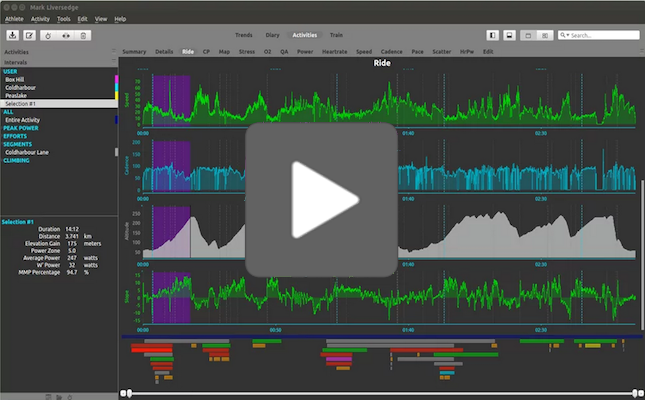

- #Goldencheetah workout code full
- #Goldencheetah workout code code
- #Goldencheetah workout code download
When working with dates you can express them using a string such as "5" which will evaluate as -30881. In this case the dates are returned as numerical values calculated as the number of days since 1. NOTE: Some functions will return a vector of dates. So for example we might work with a vector that contains the heartrate readings for an entire ride, or the values for CTL for an entire season or breakdown of workouts by their sport. In GoldenCheetah we use vectors mostly to work with time-series data and metadata. It originates from mathematics, which defines a vector as an ordered set of numbers. Working with vectorsĪ vector is a fancy name for a 1 dimensional array, a list of numbers or strings.
#Goldencheetah workout code code
Vectors and numeric values are the main use of variables in code and can be used interchangeably wherever a number can be used a vector can be used however note that when performing a comparative operation with a vector the sum of the vectors elements are used. a vector returned by built-in functions or created with the c() functionĭates are stored as number of days since 1 allowing for lots of possible date arithmetic (see working with dates below).a date (expressed as a string "yyyy/mm/dd") such as "5".As always, its easier to show by example:ĭata = np.asarray(GC.series(GC.SERIES_WATTS)) You can mix a functional style of programming where functions are the only building blocks alongside imperative programming styles where logical conditions control the execution of code blocks. Additionally, they are very close to the R programming language, so time spent to understand and learn this will help as a stepping stone to a more mature and sophisticated programming language.

There are a number of builtin charts that can be configured without the need to write code.īut if you are interested in exploring your data and generating new insights, or metrics, then you will find these expressions very useful.
#Goldencheetah workout code download
Our users are developing charts all the time and uploading them to the cloud DB so you can download and use them. User Charts are comprised of curves which each have a small program which again has a number of functions that return different aspects such as the x-values, y-values. This is useful for collecting tabular data. The program to prepare and annotate the data is a set of data filter functions. This is useful for tracking training load, performance changes as well as weight.ĭata can be prepared to display as a data table on an overview dashboard. The program to calculate the KPI is a datafilter. KPIs can be calculated to measure progress to a goal and displayed on an overview dashboard. User Metrics are written using expressions, a small program consisting of a number of functions that control when a metric is computed and a small piece of code to calculate the metric for an interval or activity. Working with the trends chart and performance (ride) chart you can create a formula to prepare data to plot on trends the formula is applied for every activity, on the performance chart it is applied once for every data point (sample) in the ride. For example a trends chart might only show run type activities with isRun. Many charts also have a filter box that can be used to limit what data is shown on the chart. Average_Power > 200 will filter activities with an average power of the entire activity that is over 200 watts.
#Goldencheetah workout code full
Where can these expressions be used ?Įxpressions can be used in a number of places, from just searching and filtering through to full blow user defined charts and metrics:Įxpressions can be used in the search/filter box at the top right of the screen using very simple logical expressions e.g. For richer analytics, perhaps involving machine learning, matrices and statistics we would recommend using either the R Chart or the Python Chart. These expressions are still intended to be a gentle introduction into more sophisticated analytics, they allow you to wrangle data, work with vectors, work with sports models, and data managed in GC. Now with version 3.6 development, the expressions have been extended to support a new user chart with syntax and functions heavily borrowed from the R Programming Language.

Largely focused on preparing data to plot, the expressions became more sophisticated over time. Around version 3.3 in 2015 the old filtering code was extended to allow full blown programs and analyses to be written.


 0 kommentar(er)
0 kommentar(er)
